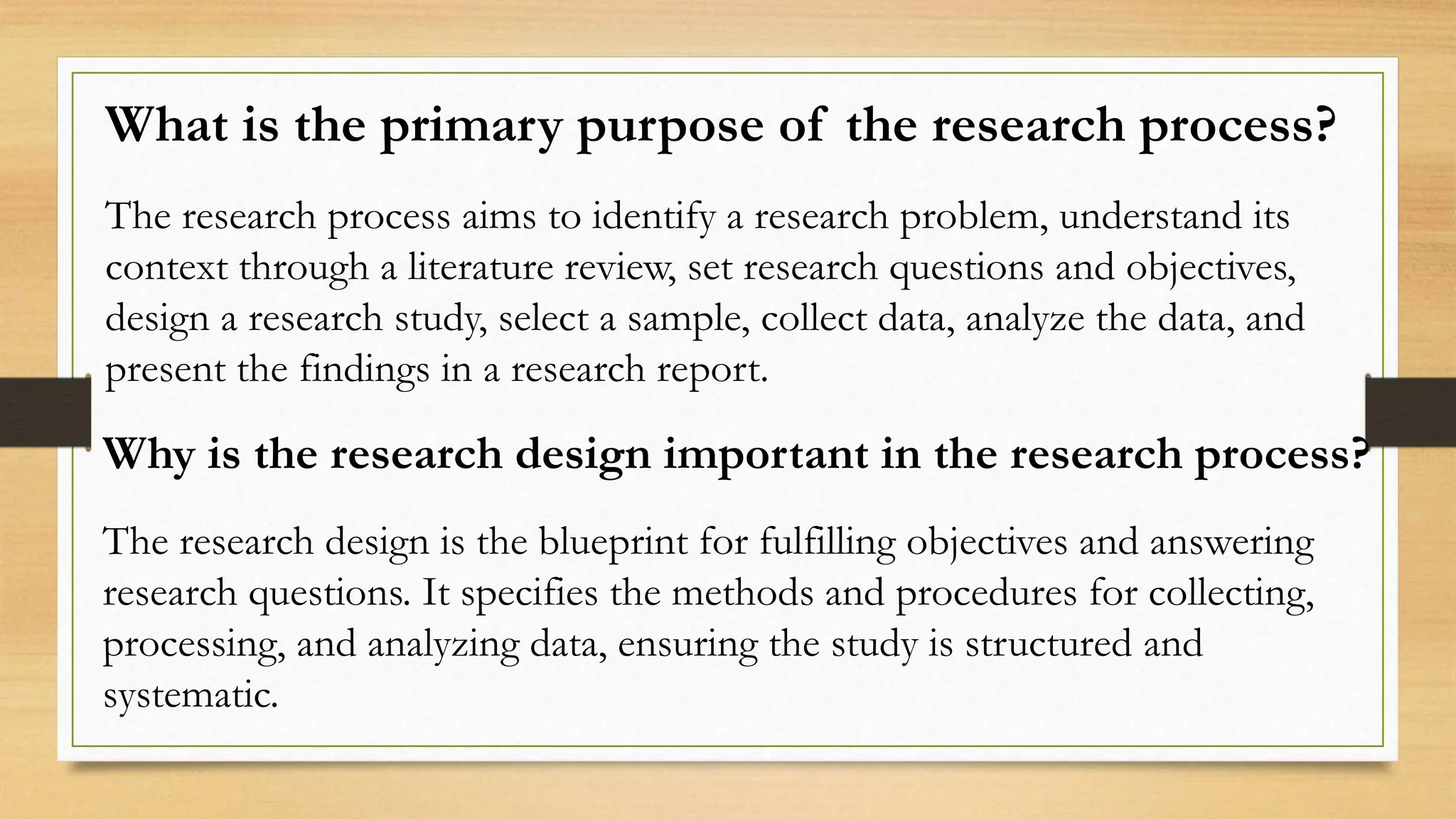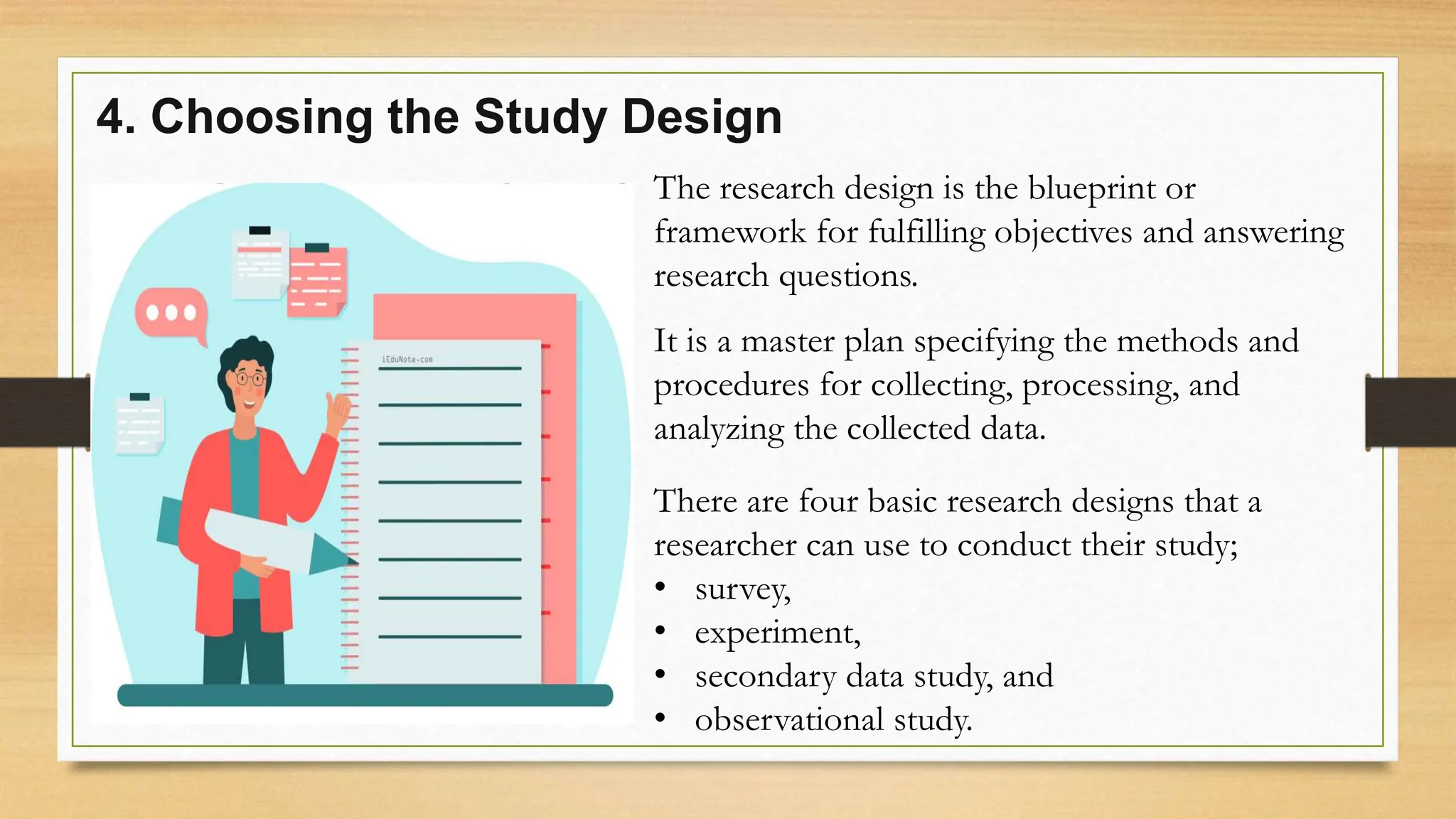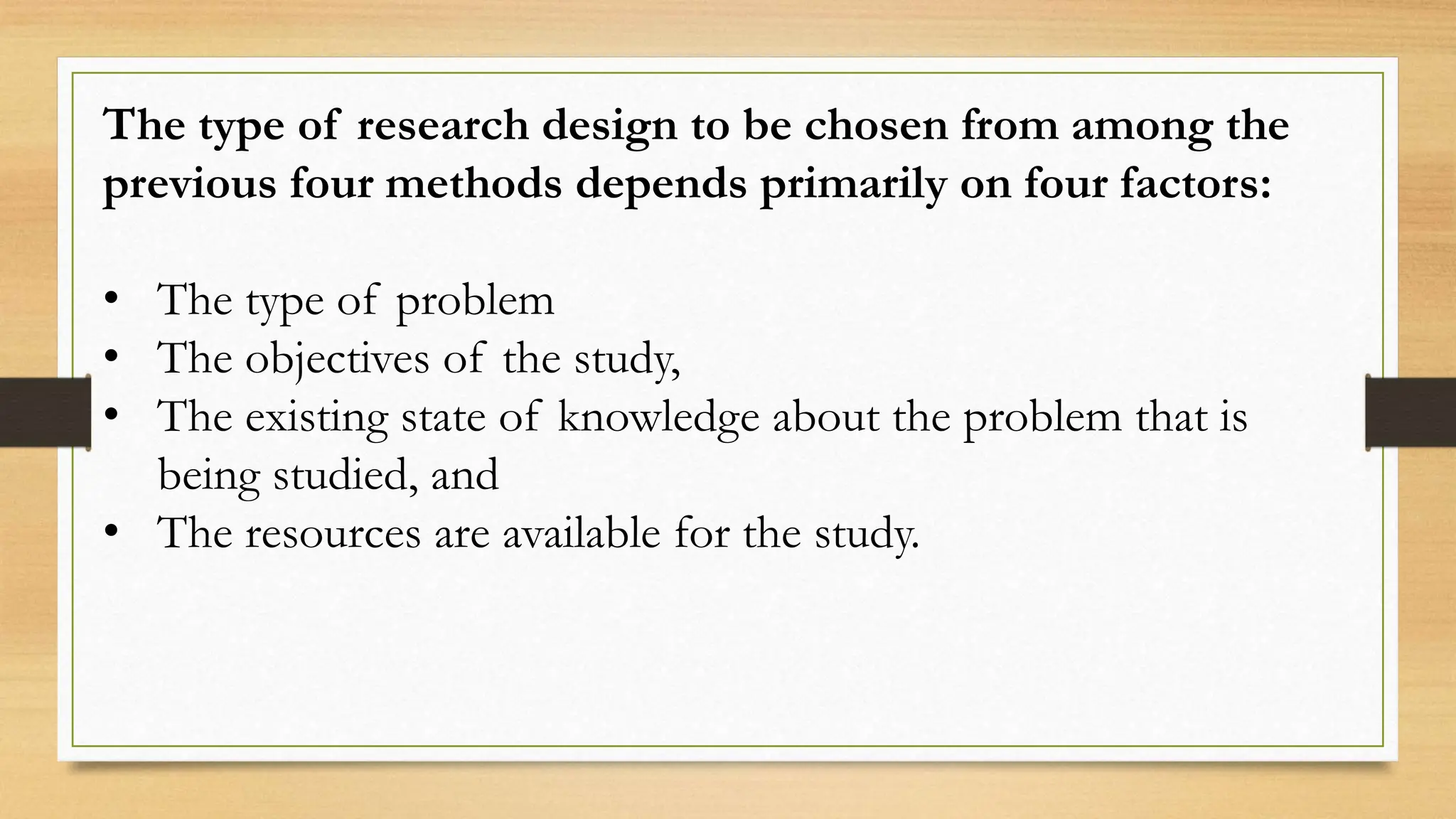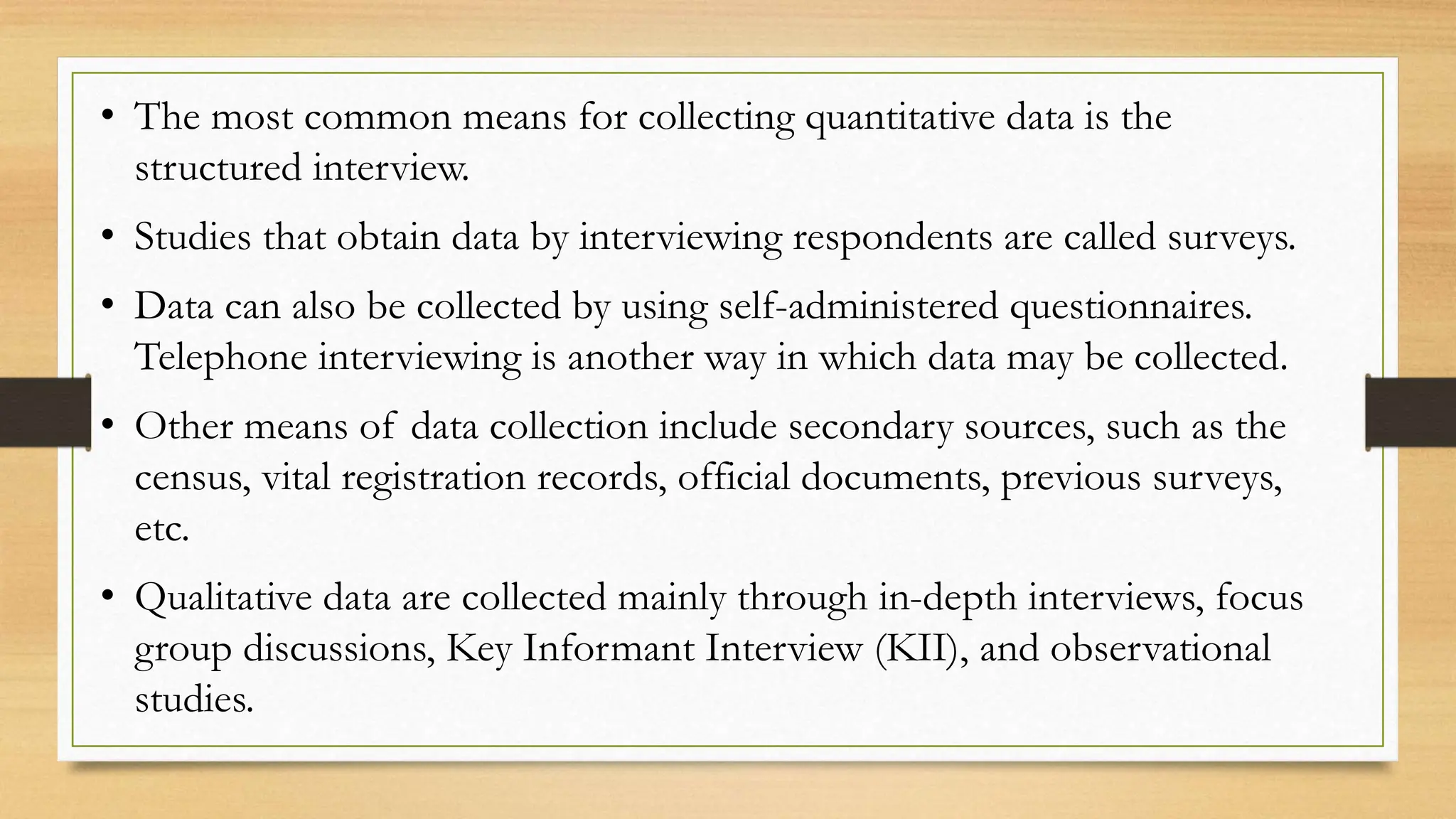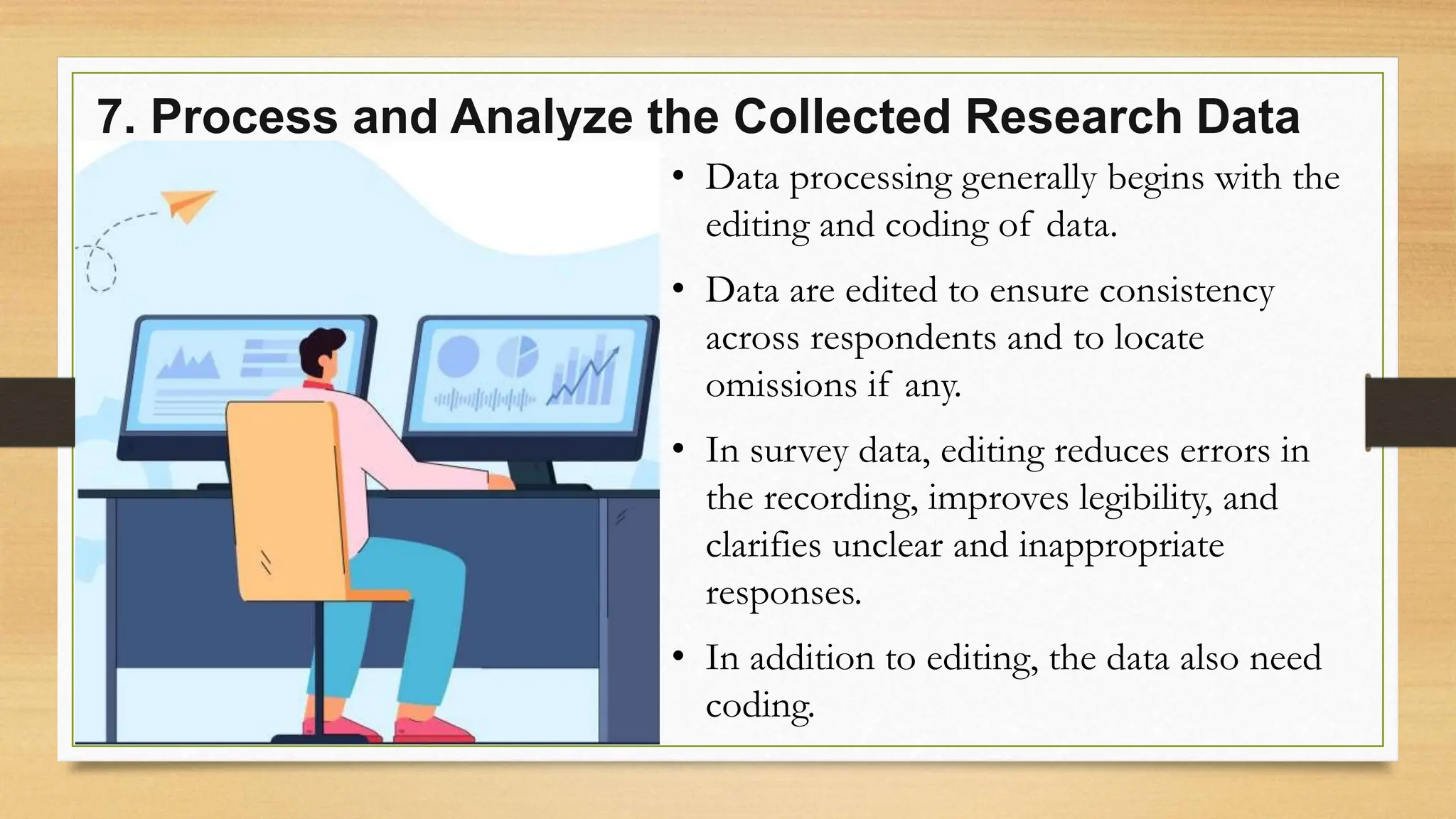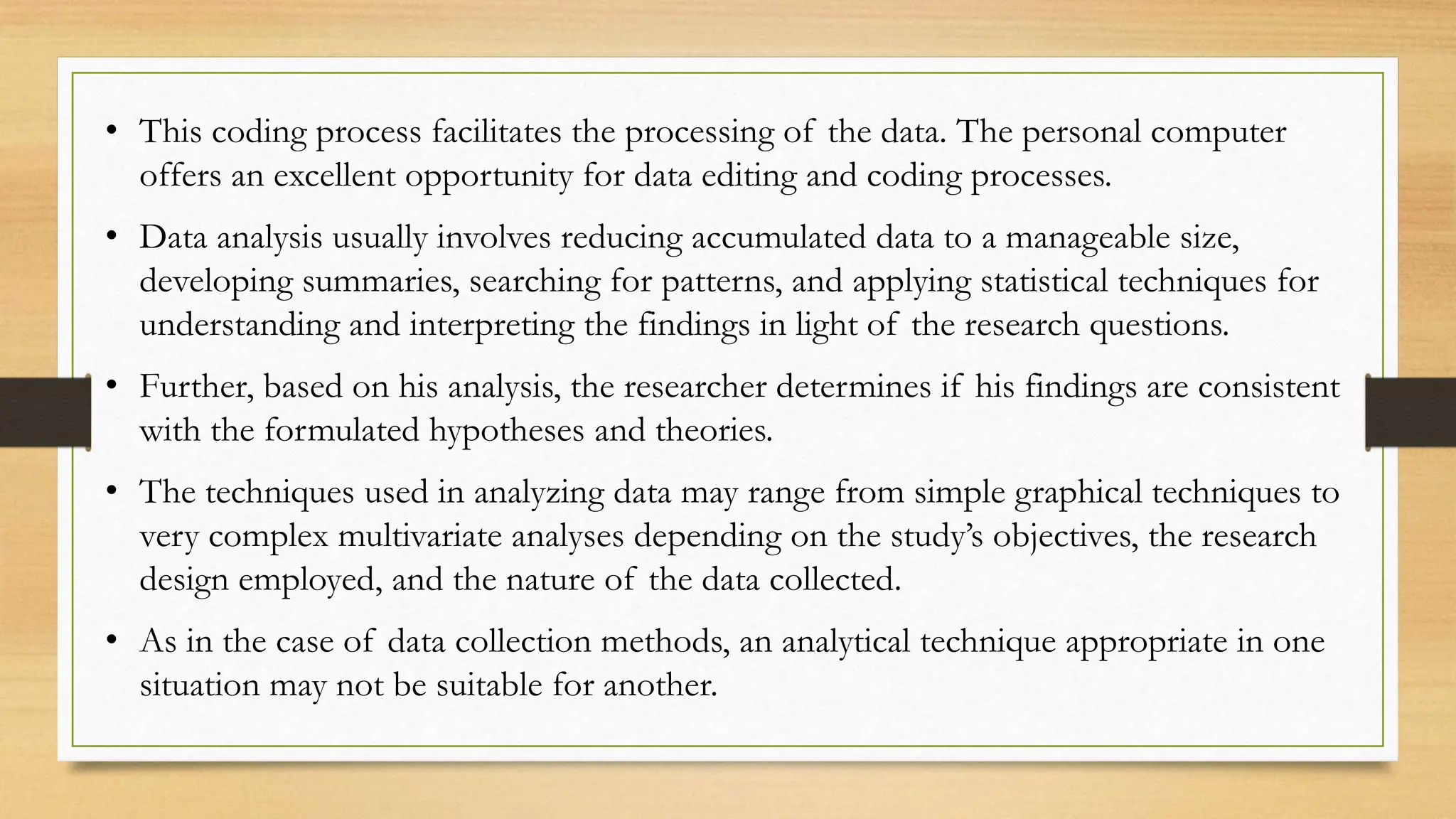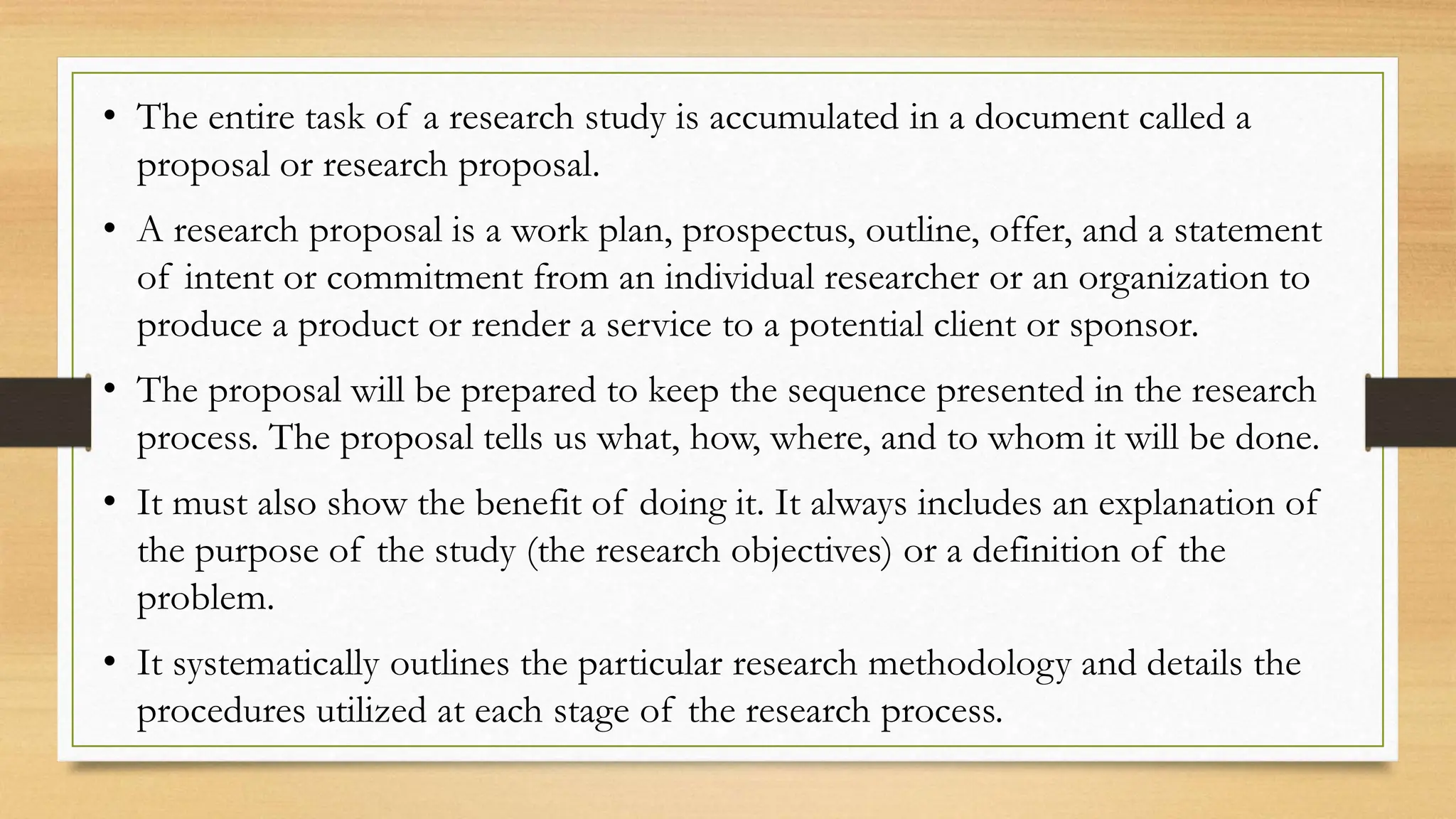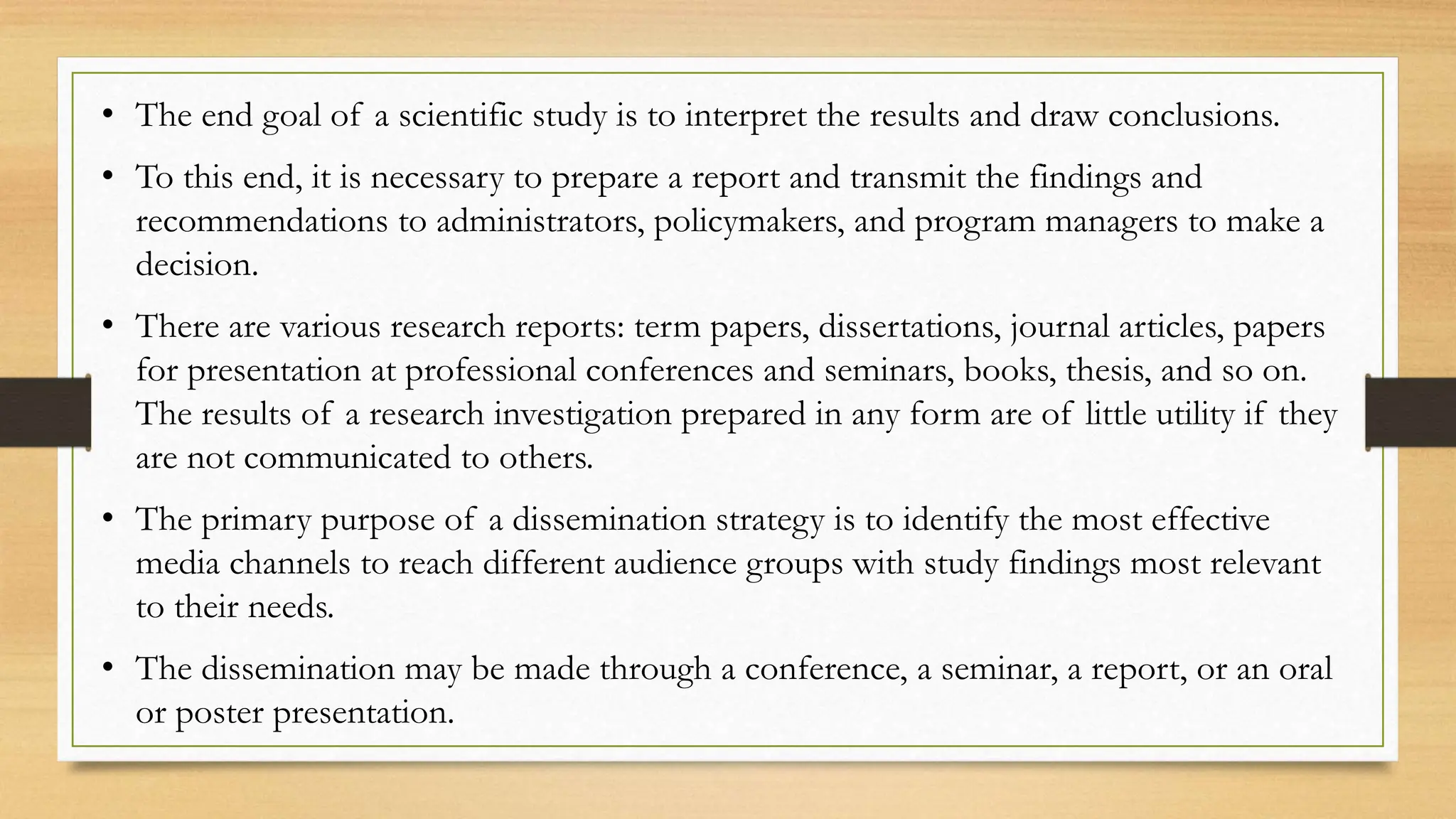The research process involves several key steps: 1) Identifying a research problem and justifying its importance through literature review. 2) Setting research objectives and hypotheses. 3) Choosing an appropriate study design like experiments, surveys, or observational studies. 4) Deciding on a sampling method and sample size. 5) Collecting data using methods like interviews, questionnaires or records. 6) Analyzing the collected data using statistical or qualitative techniques. 7) Reporting findings and conclusions in a research report. The research design provides a framework and plan for fulfilling objectives and answering research questions systematically.

